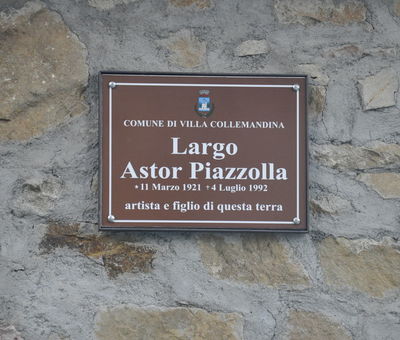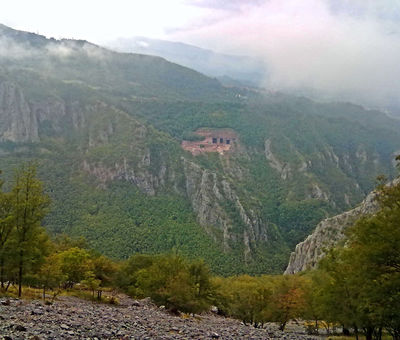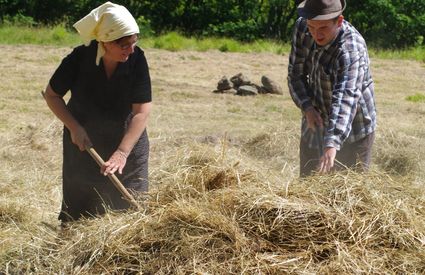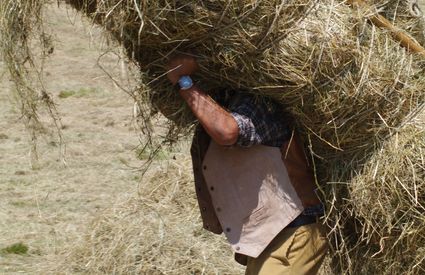The song composed upon the death of Astor Piazzolla's father
"Adìos Nonino" still resounds in the historic village of Massa Sassorosso in the municipality of Villa Collemandina. Astor Piazzolla's bandoneon (a type of concertina) seems to echo throughout the stone walls of this town perched on a spur and the birthplace of the grandmother of the Argentine Tango master.
In the summer evenings, when the village hosts music festivals among the spectacular scenery, there
is always someone playing "Adìos Nonino", the poignant farewell song
that Piazzolla wrote in New York in 1959 as a last gift to his recently
departed father, Vicente. The term "Nonino" is a variation of the
Italian word "nonnino" and was Vicente's family nickname. Astor
learned of his father's passing following a bicycle accident while on tour in
Puerto Rico. He immediately returned to New York. It is said that he locked
himself in the kitchen and played the heartbreaking melody on the bandoneon. Piazzolla's
Garfagnana roots are celebrated by a square,
Largo Astor Piazzolla, which proudly claims: "Artist and son of this
land".
The shades of marble on the rock
The village of Sassorosso boasts pre-Roman origins and was built with
local stones. It is 1,089 meters high and rises above the valley. Steep and
filled with steps, it is best visited at sunset when its colours blend with
those of the hill. The unique shade of its marble,
called Rosso Collemandina (extracted until recently) was much sought after
thanks to its colour and rare design. It was used for marble inlays,
furnishings and architectural details in churches and the houses of the
nobility. The old quarry, now in disuse,
sits on the top of the rocky cone of the village. The thousand shades of Rosso
Collemandina marble are still visible in the cut rock.







